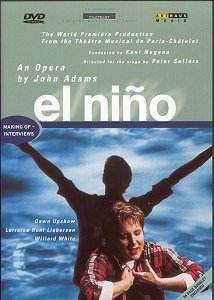 Composer: Johannes Tinctoris, Guillaume Dufay, Josquin des Prez, Heinrich Isaac, Loyset Compere, Jacob Obrecht
Composer: Johannes Tinctoris, Guillaume Dufay, Josquin des Prez, Heinrich Isaac, Loyset Compere, Jacob Obrecht
Works: Lamentationes Jeremiae, Victimae paschali, Vexilla Regis, Easter Mass Proper, Crux triumphans, Salve crux
Performers: Orlando Consort
Recording: Recorded Orford Church, Suffolk, 18-19 May 1995
Label: Metronome MET CD 1015
The Orlando Consort’s recent release, featuring a selection of works from the late medieval period, presents a rich tapestry of polyphonic settings that navigate the emotional and liturgical landscapes of Passiontide. This collection foregrounds composers such as Johannes Tinctoris, whose reputation has historically rested more on his theoretical writings than his compositions, alongside luminaries like Guillaume Dufay and Josquin des Prez. The program is both an exploration of the choral commemorations of the Passion and a journey through the transition from sorrow to joyous resurrection, encapsulating the essence of the Easter liturgy.
The performance by the Orlando Consort is strikingly cohesive, with each voice weaving seamlessly into the intricate polyphonic fabric. The balance achieved here is commendable, allowing for clarity of text and harmony even in denser passages. In particular, Dufay’s “Vexilla Regis” emerges as a highlight, with its spacious grandeur and eloquent melodic lines. The ensemble’s interpretation brings a palpable sense of reverence and drama to the work, particularly in the sustained climaxes where the harmonic layers converge. The careful attention to dynamics enhances the impact of the text, making the profound theological implications resonate with the listener.
Tinctoris’s “Lamentationes Jeremiae,” lesser-known yet richly evocative, is given a sensitive reading that showcases the subtlety of his polyphonic evolution. Despite his reputation as a strict theorist, this performance reveals a composer capable of profound emotional expression. The Orlando Consort’s ability to navigate the nuanced shifts in mood—from the somber lamentations to the more jubilant Easter motifs—demonstrates a keen interpretative insight. Compere’s “Crux triumphans,” while perhaps lacking the technical flourishes found in Dufay and Josquin, is rendered with an affecting sincerity that underscores its thematic weight.
Recording quality is exemplary, with a warm, natural sound that captures the resonant acoustics of Orford Church. Every voice is distinct, yet they blend beautifully, allowing the intricate counterpoint to emerge vividly. The engineering serves the music well, supporting the ensemble’s tonal richness while avoiding any muddiness, even in the more complex passages. This clarity is particularly effective in Josquin’s “Victimae paschali,” where the interplay of the cantus firmus against the freely composed lines showcases the ingenuity of the composer. The balance between the parts is managed with meticulous care, ensuring that the text is always intelligible, which is crucial for works so steeped in liturgical meaning.
The booklet accompanying the recording is thorough, providing texts and insightful notes in multiple languages, which enhance the listening experience and facilitate a deeper understanding of the context in which these works were composed. The Orlando Consort’s commitment to historical authenticity and textural integrity shines through in this collection, making it a significant addition to the canon of medieval choral music recordings.
This recording not only revives the music of a pivotal era but also serves as an eloquent testament to the enduring power of polyphony in expressing the spiritual journey from despair to hope. The Orlando Consort manages to make these historical works feel immediate and relevant, inviting listeners to engage with the emotional and theological depths that characterize the Passion narrative. A remarkable achievement that will resonate with both connoisseurs and newcomers to early music alike.



